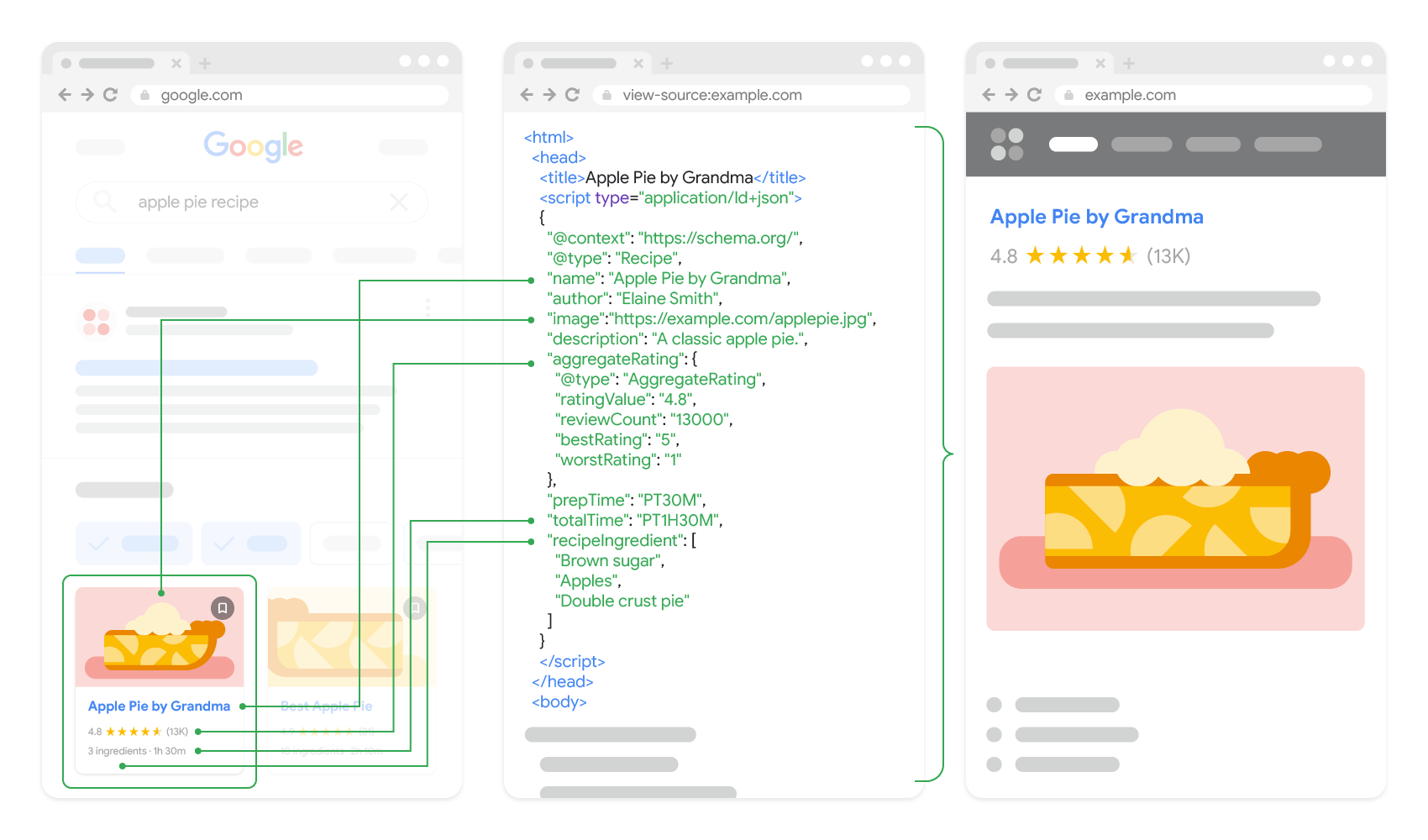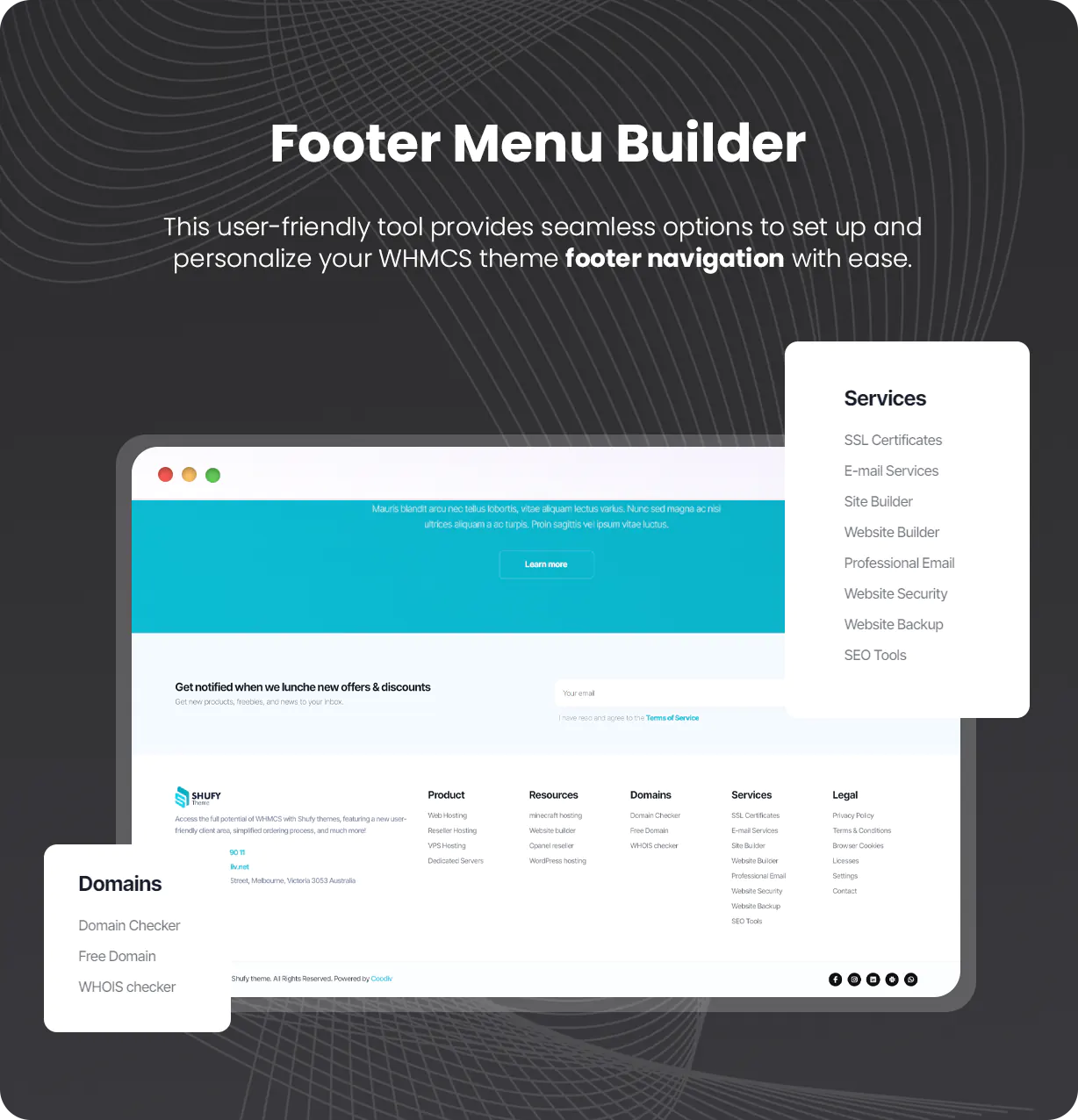
Why add structured data to a page?
Adding structured data can enable search results that are more engaging to users and might encourage them to interact more with your website, which are called rich results. Here are some case studies of websites that have implemented structured data for their site:
- Rotten Tomatoes added structured data to 100,000 unique pages and measured a 25% higher click-through rate for pages enhanced with structured data, compared to pages without structured data.
- The Food Network has converted 80% of their pages to enable search features, and has seen a 35% increase in visits.
- Rakuten has found that users spend 1.5x more time on pages that implemented structured data than on non-structured data pages, and have a 3.6x higher interaction rate on AMP pages with search features vs non-feature AMP pages.
- Nestlé has measured pages that show as rich results in search have an 82% higher click through rate than non-rich result pages.
How structured data works in Google Search
Google uses structured data that it finds on the web to understand the content of the page, as well as to gather information about the web and the world in general, such as information about the people, books, or companies that are included in the markup. For example, when a recipe page has JSON-LD structured data (describing the title of the recipe, the author of the recipe, and other details), Google Search can use that information to display a rich result for the recipe:
|
Structured data is coded using in-page markup on the page that the information applies to. The structured data on the page describes the content of that page. Don't create blank or empty pages just to hold structured data, and don't add structured data about information that is not visible to the user, even if the information is accurate. For more technical and quality guidelines, see the Structured data general guidelines. The Rich Results Test is an easy and useful tool for validating your structured data, and in some cases, previewing a feature in Google Search. Try it out: |
Supported formats
Google Search supports structured data in the following formats, unless documented otherwise. In general, we recommend using a format that's easiest for you to implement and maintain (in most cases, that's JSON-LD); all 3 formats are equally fine for Google, as long as the markup is valid and properly implemented per the feature's documentation.
| Formats | |
|---|---|
| JSON-LD* (Recommended) | A JavaScript notation embedded in a <script> tag in the <head> and <body> elements of an HTML page. The markup is not interleaved with the user-visible text, which makes nested data items easier to express, such as the Country of a Postal of a Music of an Event. Also, Google can read JSON-LD data when it is dynamically injected into the page's contents, such as by JavaScript code or embedded widgets in your content management system. |
| Microdata | An open-community HTML specification used to nest structured data within HTML content. Like RDFa, it uses HTML tag attributes to name the properties you want to expose as structured data. It is typically used in the <body> element, but can be used in the <head> element. |
| RDFa | An HTML5 extension that supports linked data by introducing HTML tag attributes that correspond to the user-visible content that you want to describe for search engines. RDFa is commonly used in both the <head> and <body> sections of the HTML page. |


